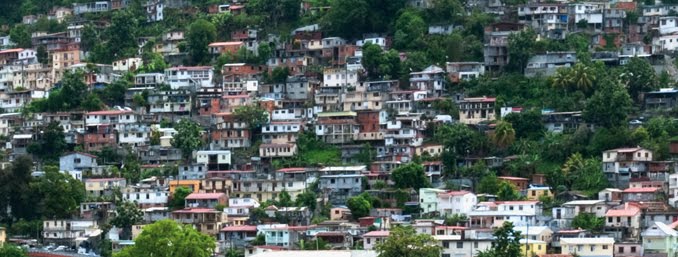Martinique like many Caribbean islands, has a complex and unique history. It was inhabited by Amerindians before the arrival of Columbs. Trenelle's history has its roots in slavery. The inhabitants this neighbourhood are the descendants of sugar cane plantation slaves, who moved from countryside to the city of Fort-de-France. Aimé Cesaire, the mayor of the town at the time gave them a land to occupt
The neighborhood invented their own way of living. They built their own homes, and a network of stairs for access. Nowadays, people livind in Trenelle live in poverty and densy populated conditions, nevertheless these people are proud of what they do, of who they are.
At the moment the social sector helps people living in Trenelle and launch social projects to create social mobility and improve the physical environment in Trenelle.
This is a challenge. Trenelle is surrounded by a military base, a motorway, a river, and 40% of people are unemployed.
The arrival of television, cars and technology had a strong impact on the neighborhood and broke down
the solidarity and sense community within the neighborhood..
 |
| ZarafaFilms. RFO Production. |
 |
| ZarafaFilms. RFO Production. |
 |
| ZarafaFilms. RFO Production. |
I wanted to introduce gardening structure to preserve and nurture the social bond in Trenelle.































